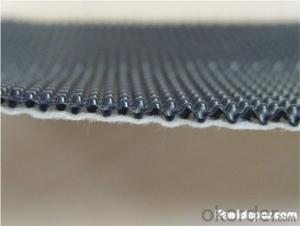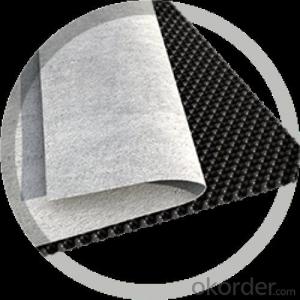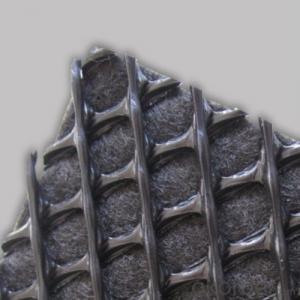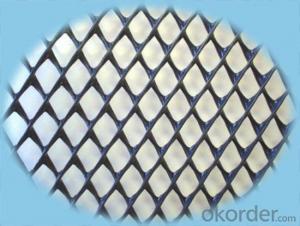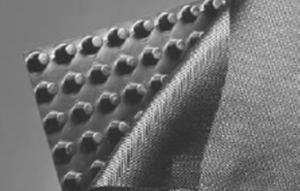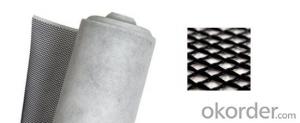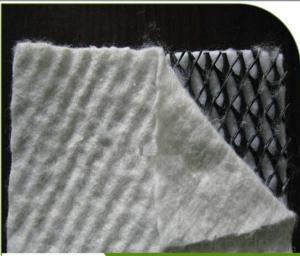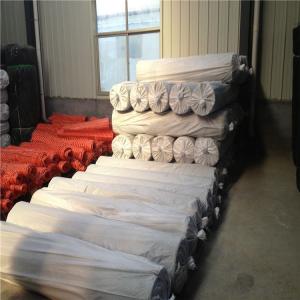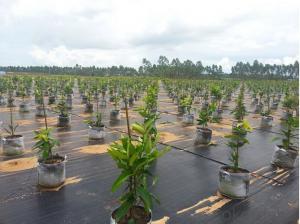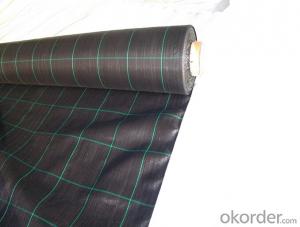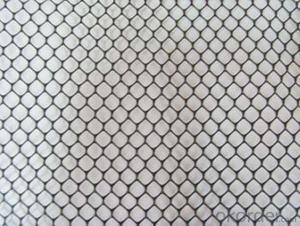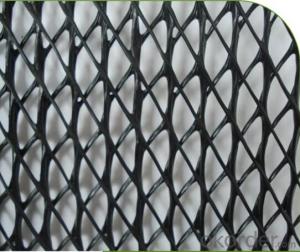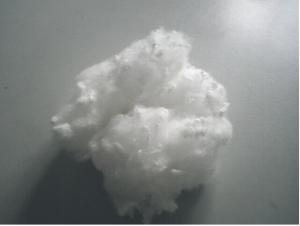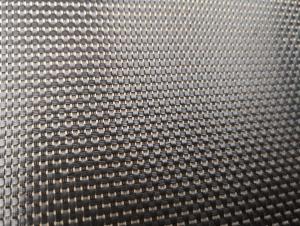Composite Geotextiles for Architectural Engineering
- Loading Port:
- Qingdao
- Payment Terms:
- TT or LC
- Min Order Qty:
- 5000 m²
- Supply Capability:
- 100000 m²/month
OKorder Service Pledge
OKorder Financial Service
You Might Also Like
Composite Geotextiles for Architectural Engineering
Description Of Composite Geotextiles for Architectural Engineering
Composite material is a general term for the synthetic materials used in civil engineering. As a kind of civil engineering materials, it is to synthetic polymers, such as plastics, chemical fiber, synthetic rubber as raw material, made of various types of products, placed inside the soil, surface, or various kinds of soil play to strengthen or to protect the soil. The application of the technology of soil engineering synthetic materials will be divided into the type of the material of the soil, the soil, the soil, the special material and the composite. The special materials for the special materials include the soil engineering film bag, the soil engineering net, the geotechnical mesh pad, the soil working chamber, the soil texture, the bentonite mat, the polystyrene foamed plastics (EPS), etc.. The composite material is made from the above mentioned materials, such as composite coating, composite material, composite material, composite waterproof and drainage (drainage), etc..
Main Features of Composite Geotextiles for Architectural Engineering
The advantages of the composite is that the weight is light, and the overall continuity is good (can be made into a large area of the whole), construction is convenient, high tensile strength, corrosion resistance and resistance to microorganisms. The disadvantage is that, without special treatment, anti ultraviolet ability, such as exposure to ultraviolet radiation, is easy to aging, but if not directly exposed, the anti aging and durability performance is still high.
Applications of Composite Geotextiles for Architectural Engineering
1, for the stability of highway, railway roadbed.
2, used to bear the weight of the embankment and shallow water treatment.
3, used to prevent the landslide and the load of the gravity of the hybrid retaining wall.
IMages of Composite Geotextiles for Architectural Engineering
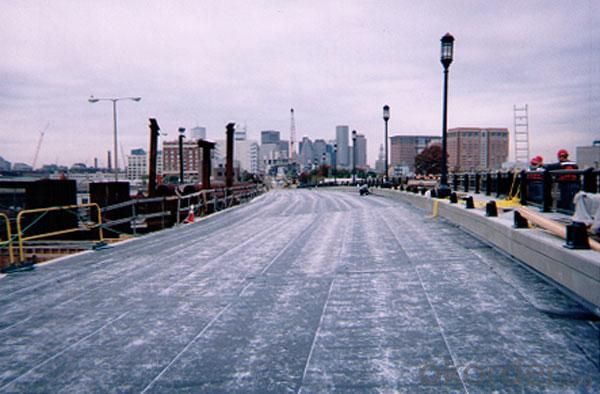
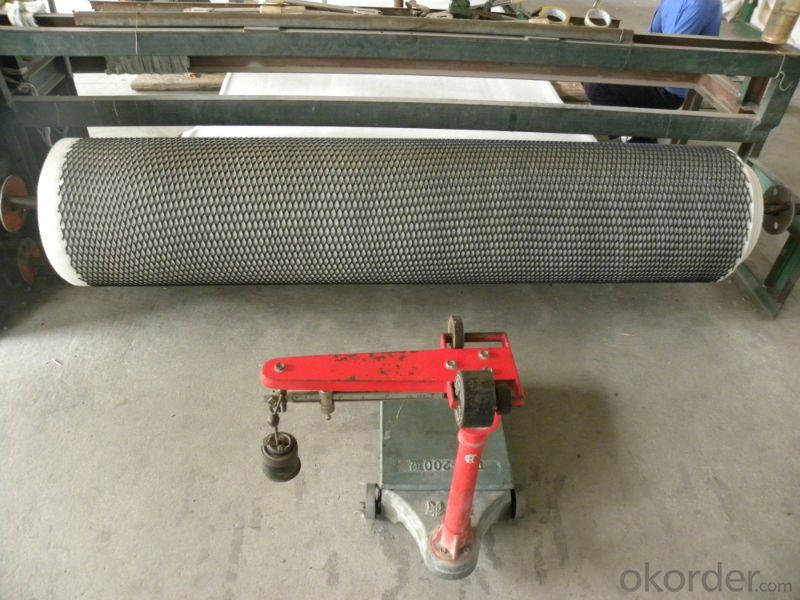
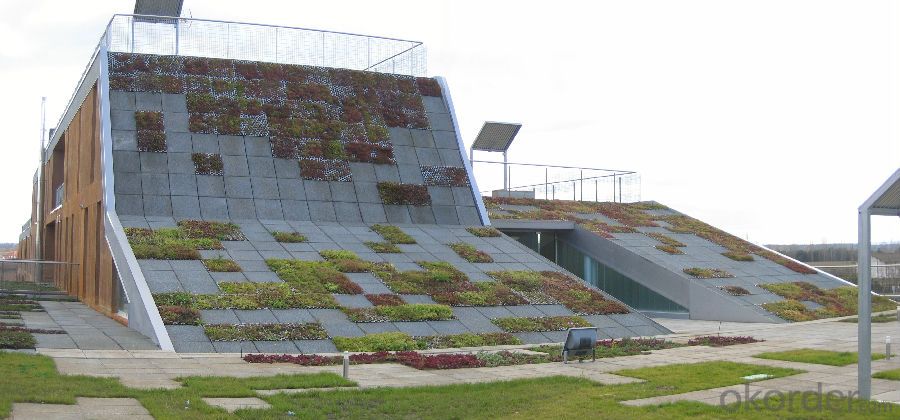

FAQ:
1. What are we supplying?
We are specialized in producing .geotextile , geocell, geogrid, geomembrane
2. How Many years experience do we have?
We have been exported to more than 15 countries in the past 10 years.
3. How long do we usually reply your request?
We always reply our customer within 12 hours.
- Q:What is the actual state of the bar in civil engineering?
- (3) the basis of inorganic materials. Candidates according to their future professional research direction, only from the three parts of the content to choose one of the parts (three-election), the three- The material, including the basic concepts of material mechanics, axial stretching and compression, reverse, bending the internal force of the bar, stress, deformation and other calculations and strength, stiffness conditions of the application , The geometric properties of the section, the stress and strain analysis and the strength theory, the combined deformation, the pressure bar stability, the energy method and so on.It requires the candidate to master the basic concept and the basic theory of the material mechanics, and has the ability to analyze and deal with the basic problem of material mechanics. 2.1 examination content and examination requirements 1. Material mechanics overview Deformed, isotropic and anisotropic elastomer, elastic body of the force and deformation characteristics; engineering structure and components, rods of the main form of force and deformation.
- Q:What are the advantages of using geotextile bags in coastal engineering projects?
- Geotextile bags offer several advantages in coastal engineering projects. Firstly, they provide effective erosion control by trapping sediment and preventing its transport, thus stabilizing the coastal environment. Secondly, they are flexible and adaptable, allowing for easy installation and adjustment to changing coastal conditions. Additionally, geotextile bags are durable and resistant to UV degradation, ensuring long-term effectiveness. Furthermore, they are environmentally friendly, as they are made from biodegradable materials and can be filled with local sediment, reducing the need for external resources. Overall, geotextile bags provide a cost-effective and sustainable solution for coastal protection and restoration.
- Q:How are geocells used for erosion control on coastal cliffs?
- Geocells are used for erosion control on coastal cliffs by providing structural support and stability to the soil and slopes. These three-dimensional honeycomb-like structures are filled with soil or other materials and then placed on the cliff face. The geocells help to prevent soil erosion and minimize the impact of wave action, as they create a reinforced layer that can withstand the forces of wind and water. The cells also promote vegetation growth, further enhancing their effectiveness in controlling erosion on coastal cliffs.
- Q:Can earthwork products be customized to specific project requirements?
- Yes, earthwork products can be customized to specific project requirements.
- Q:Are there any specific earthwork products available for railway embankment reinforcement?
- Yes, there are specific earthwork products available for railway embankment reinforcement. These products are designed to enhance the stability and strength of the embankments, ensuring the safe and efficient operation of trains. Examples of such products include geosynthetic materials like geotextiles, geogrids, and geocells, which are used to improve soil stability, prevent erosion, and distribute loads. Additionally, specialized gabion baskets and retaining walls are also used to reinforce embankments and prevent slope failures.
- Q:Can earthwork products be used in sports field installations?
- Yes, earthwork products can be used in sports field installations. These products, such as topsoil, sand, and gravel, can be used for various purposes like leveling the field, improving drainage, and creating a stable foundation for the turf.
- Q:What are the benefits of using geosynthetic clay liners in mining applications?
- Geosynthetic clay liners offer several benefits in mining applications. Firstly, they provide an effective barrier against water and chemical leakage, reducing the risk of contamination to surrounding soil and water sources. Secondly, they have high tensile strength and excellent puncture resistance, ensuring long-term stability and durability in harsh mining conditions. Additionally, geosynthetic clay liners are relatively easy to install and maintain, saving time and costs compared to traditional clay liners. Overall, their use in mining applications promotes environmental protection, enhances operational efficiency, and minimizes the potential for environmental hazards.
- Q:What are the different types of culverts?
- There are several types of culverts, including box culverts, pipe culverts, arch culverts, and bridge culverts.
- Q:How are geotextile mats used in erosion control on slopes?
- Geotextile mats are used in erosion control on slopes by providing a protective layer that stabilizes the soil and prevents erosion. These mats are typically made of synthetic materials and are placed on the slope surface to act as a barrier against water flow and soil movement. They allow water to pass through while retaining soil particles, reducing the risk of erosion. Additionally, geotextile mats strengthen the soil structure, improving slope stability and minimizing the potential for landslides.
- Q:Can earthwork products be used in dam construction?
- Yes, earthwork products can be used in dam construction. Earthwork products such as soil, rocks, gravels, and clay are commonly used in the construction of dams. These materials are used to build the embankments and foundations of the dam, providing stability and strength to the structure. Additionally, earthwork products can also be used for erosion control and lining purposes in dam construction projects.
1. Manufacturer Overview |
|
|---|---|
| Location | |
| Year Established | |
| Annual Output Value | |
| Main Markets | |
| Company Certifications | |
2. Manufacturer Certificates |
|
|---|---|
| a) Certification Name | |
| Range | |
| Reference | |
| Validity Period | |
3. Manufacturer Capability |
|
|---|---|
| a)Trade Capacity | |
| Nearest Port | |
| Export Percentage | |
| No.of Employees in Trade Department | |
| Language Spoken: | |
| b)Factory Information | |
| Factory Size: | |
| No. of Production Lines | |
| Contract Manufacturing | |
| Product Price Range | |
Send your message to us
Composite Geotextiles for Architectural Engineering
- Loading Port:
- Qingdao
- Payment Terms:
- TT or LC
- Min Order Qty:
- 5000 m²
- Supply Capability:
- 100000 m²/month
OKorder Service Pledge
OKorder Financial Service
Similar products
New products
Hot products
Hot Searches
Related keywords
